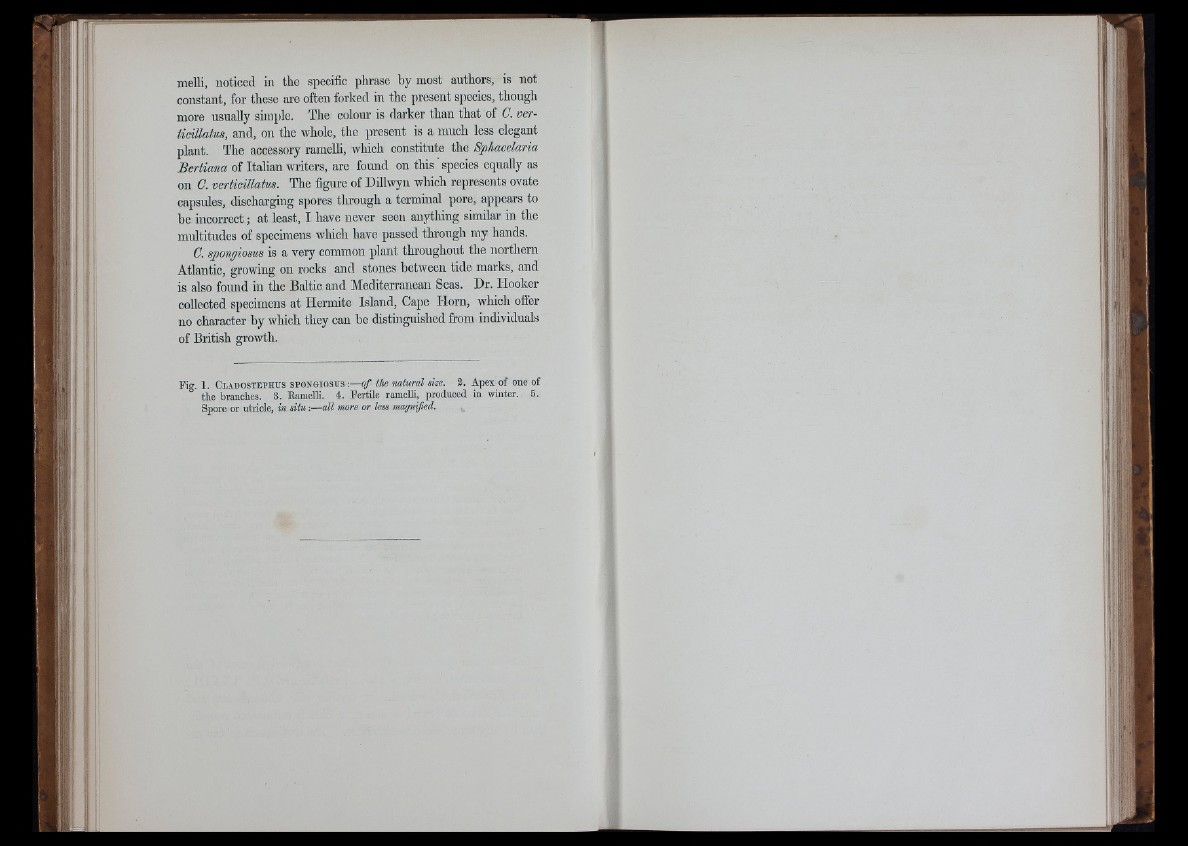
melli, noticed in the specific phrase by most authors, is not
constant, for these are often forked in the present species, though
more usually simple. The colour is darker than that of C. verticillatus,
and, on the whole, the present is a much less elegant
plant. The accessory ramelli, which constitute the Sphacelaria
Bertiana of Italian writers, are found on this species equally as
on C. verticillatus. The figure of Dillwyn which represents ovate
capsules, discharging spores through a terminal pore, appears to
be incorrect; at least, I have never seen anything similar in the
multitudes of specimens which have passed through my hands.
G. spongiosus is a very common plant throughout the northern
Atlantic, growing on rocks and stones between tide marks, and
is also found in the Baltic and Mediterranean Seas. Dr. liooker
collected specimens at Hermite Island, Cape Horn, which offer
no character by which they can he distinguished from individuals
of British growth.
Fio-. 1. Cl-ADOSTBPHUS SPONGIOSUS :— o f the natural size. 2. Apex of one of
° the branches. 3. Ramelli. 4. Fertile ramelli, produced in winter. 5.
Spore or utricle, in, s itu ;— all more or li
i i i
Ilf
f
Pj l i
i
f.“«